Friday 17 March 2017
Last night my good friend, Glen, arrived from NZ. After spending an hour plus at the Hertz rental car counter dealing with an idiot (in spite of the booking saying and being priced for the car to be dropped off at KL airport in Malaysia on Monday he insisted we couldn’t take the car to Malaysia without paying extra money) I eventually picked Glen up late from terminal three and headed home.

At eight this morning we were on the road to Masai, just east of Johor Bahru in Malaysia.
For years Glen has been doing business in Malaysia and has made many trips across the causeway. I have accompanied him on a a few trips but always by taxi.
We got through the Singapore check point at Woodlands okay as I had purchased a cash card at the airport to pay the toll. We get to immigration on the Malay side pull up at the barrier.


Thousands of motor bikes pass through these checkpoints also. (They have an almost efficient system of processing the thousands of cars that cross the border daily.)
The barrier won’t go up until we pay a toll. We need a Malay touch card. Glen waits in the car as I go off to buy a card. Bugger! they don’t take credit cards or Singapore money. The guy just points to another booth; the guy at that one doesn’t want to know. Eventually a friendly customs guy takes me up several floors to change the money then I buy a card and finally thirty plus minutes later I get back to the car, still at the barrier, and we are across the border.
It’s been about four years since I last visited this part of the world. The development in that time is overwhelming.




A huge flyover motorway heading north that was under construction is now complete. Numerous forty-plus storey, well designed, attractive apartment towers have been completed with many more under construction. Land has been reclaimed on what was swamp and is now bristling with new buildings. But don’t worry not everything has changed – there is still plenty of rubbish and plastic bags drifting around.
Eventually we arrive at Dalac a boat building yard. We walk the last few hundred meters as a truck with a big boat on the back is having trouble clearing the power lines and has blocked the road.
We had a meeting with Mr Goh and his two sons, who run the boatyard where they build military patrol boats and service a number of civilian craft from Singapore.



There is a big shed and a large yard with a couple of slipways and a boat lifter. Most of the yard is reclaimed land they they have done themselves using mainly fill from demolished building sites.
Some of the workers sleep on site in containers.

Next stop was a Todak Restaurant; a bass was scooped from a tank and on our table within ten minutes. From here you look across the fish farm to Singapore.

Just down the road from here people pay to fish in stocked ponds about 50x50m.


After lunch we made our way back across the causeway to Singapore; the return journey went a little smoother.
A little note for those renting a car in Singapore or Malaysia: The cash card in Singapore is essential – not only do you need it to cross the border but also for car-parking as they don’t take cash or credit cards.

The Malay ‘touch and go’ card is not only essential to cross the border but can also be used for road tolls, of which there are many. I
t is also taken by some shops.

After arriving home and meeting up with Sylvia we took a taxi to Marina Bay, alighting at the Sands hotel. We walked under the road through the shopping centre; with all the top brands and incredible window displays this place is stunning.



All the restaurants we tried were booked out so we headed for the food hall. Complete with skating rink this place was packed. Eventually we grabbed a table and enjoyed a sample of the huge selection of food.

There is a light show running in the marina just now so we wandered out to take a look.





We took a stroll across the Helix Bridge before heading home.
Saturday 18 March 2017
Glen and I headed to the the Republic of Singapore Yacht Club, which is situated next to a huge container port.

The club has a couple of large accommodation blocks and a couple of large boat storage sheds. Interestingly there were few yachts in the marina but mostly power boats.


Next we headed to the marina at Keppel Bay. There is a two story expressway that runs across the waterfront which is easy to navigate. It is well designed and attractive with trees on both sides.

Keppel marina is stunning, surrounded by a variety of well-designed buildings and full of a variety of nice boats. As I raised my camera to take a photo a polite security guard came over and advised me that I could not take photographs with a camera – I was allowed to use my phone or I could take photographs if he didn’t see me. We took stroll round to the side of the morning and took some photographs.


We then headed to a rather nice bar and restaurant, owned by and overlooking the marina, to enjoy a cooling ale and watch boats and people go by.


In the evening we went to a restaurant Sylvia had located called Salt on the 55th floor of the Ion Building in Orchard Road. We were joined by Naazli, a lovely local lady who had organised all the furniture and accessories for our apartment and done a magnificent job. Not only is the food great at this place but the views are stunning.




So far every day I have spent here has been smoggy so it is very hard to get good quality pictures.
Sunday 19 March 2017
Sylvia had flown out to France late last night. Glen and I headed to Johor Bahru. I still can’t get over how well the roading is done here: six-lane motorways with large, planted medium strips, grassy berms on each side lined with tall trees. It’s often like driving on a country interstate with not a building on site.

This time we were all organised with our cash and touch card. We crossed the Singapore Woodlands check point with ease.

Then we hit the causeway! It was jammed! Over an hour later we reached the Malay check point. After a brief meeting with a guy in Masai we headed back to the Dalac boatyard to check out a boat.
That done we began our journey to Malacca. Heading up the KL motorway the drive was easy. Three lanes each way with a wide medium strip this is a well maintained first class motorway. The speed limit is 110kph but in the fast lane cars tend to be exceeding 130kph. The jungle that once lined the land on both sides of the road has been replaced mostly with palm trees. Palm oil production started in Selangor in 1917 but really took off in 1960 to replace the country’s reliance on rubber.
Even as we turned off to Muir at Yong Peng the roads most of the way to the coast were lined with palms. Large processing sheds were dotted along the way.


Palm trees now take up 77% of agricultural land or 15% of the of the country’s land area. All fuel here comprises 5% biofuel from palm oil trees. Furniture is also produced from these.
We passed through Muir and followed the road up the coast to Malacca where we checked into the Holiday Inn. With its infinity pool, executive room with a two hour happy hour, free food and drink, plus breakfast for only 400 locals or NZ$128, it was a good deal.



Our room on the 18th floor gave us a great view back over the city.



The city combines the old and new with many high rise apartments being built. Malacca is one of the cleaner cities I have visited in Malaysia.
Monday 21 March 2017
We drove to the outskirts of Malacca to visit a company called Brazen. Run by an Aussi guy called John who has spent the last 15 years here, its diversification is amazing. In their 10,000m2 factory they produce a huge range of products including carbon fibre buses, boats, body armour, building facades and much more.


John told us how most of his labour is imported as Malays don’t tend to want to do manual labour but rather drive a computer these days. The last group he had here were from Bangladesh; they are now being replaced with a group from Nepal. Malay immigration has strict, well-enforced rules on how long foreign workers can stay.
After a few hours we drove out to the main highway through more palm-oil plantations and up to the KL airport. The flight to Langkawi Island was short with an enthusiastic young Asian Air crew.
The 15 km journey from the Langkawi airport to the Bay View Hotel took well over an hour.
The hotel had once, no doubt long ago, been a flash one. Situated in Kual, I think the main town on the island, it has a four star rating. It was hard to tell which was more threadbare, the carpet or the towels. It does have great views though. On the water front there is a new accommodation and shopping centre being built. The area surrounding the hotel is safe but rough with shops stacked with what appear to be cheap “made in China” goods.




Tuesday 22 March 2017
We arrived at Lima 17 (Langkawi biannual airshow) and took a stroll around the tarmac where aircraft from many parts of the world were on display. It was all pretty casual with one able to stroll right up to most aircraft.
 South Korean Black Eagles
South Korean Black Eagles

 Russian Knights
Russian Knights




 Inside C17
Inside C17
We then took a look in the pavilion. The amusing thing in here was on one hand a great display of rockets and weapons for shooting things down and blowing things up, then on the other a whole lot of things designed to counter one getting shot down or blown up.





I watched a simulator demonstration on the British-built Typhoon. When they finished and the group left, the pilot asked me if I wanted a go. Silly question really! I jumped in the cockpit and he explained how it worked and told me that you can’t stall or do anything in this aircraft that will compromise it as the electronics won’t let you. If you black out it will recover, the auto pilot will take over and point it in a safe direction until you recover. All the data is on a heads up display. Thrusting the throttle fully forward we left the runway quickly and in no time at all were at 500 knots. Stick back into a vertical climb and in no time we were at 30,000 ft. After a few turns and a bit of looking around some targets started to appear. The aircraft is designed to engage these at a very long range. I didn’t even really have to aim, just flick a switch to arm up a rocket and pull the trigger. I had just hit the fourth target with 9 rockets and 99 rounds of 30mm still left to use when the local crown prince turned up wanting a turn so I had to bail. Fair enough to as they are trying to sell these to the Malays, as are the French with the Rafale.



At 2pm the aerial display started. A couple of Malay airlines flew over followed by two Russian SU-30MKM’s (Mig-fighters), then the Korean Black Knights.



We then took a taxi to Awan Porto Malai where the marine part of the show was taking place. We arrived just in time to catch the end of a rescue demo by the Naval Special Forces. As they are pulled out, clipped to a rope under a chopper, a flying water tank comes in and douses the fire.



We wandered the wharf area chatting to various people and looking at a few different military type boats.





After a beer we headed back to the hotel. We visited the hotel bar which has all the signs of a place going broke; no beer in the taps and a huge humidor room with lots of cigar boxes but no cigars. There I ran into Par, from Aimpoint in Sweden. I had met him several times before in both Las Vegas and Sweden. We had a good catch up.
Wednesday 23 March 2017
We went back to the airport for another look around. There is a lot of brass floating around today it must be the general’s day out. We took another tour around the tarmac.





We then watched another air display. First up was the French Rafale. The speed and manoeuvrability of this plane was far superior to anything else we had seen. This was followed by a display from the Russian Knights, tame by comparison but much easier to film.
After having a look through the tented marine displays we headed back to the marina.
I had walked through the VIP area, as it was pretty empty, to take a photo. I turned around to note a senior officer looking at me. “Oops maybe I shouldn’t be here.” He waved me over to take a seat next to him. He then explained they were doing a pre-run for the launch of a rescue app they were launching the next day. He went on to explain it as it played on the surrounding TV screens. Someone in trouble in their boat on the Malaysian coast presses the rescue button on the phone app and the navy comes to the rescue.
Green smoke billowed from a boat as a chopper flew in followed by a patrol boat.




The officer handed me his card – not only was he an Admiral but the Chief of the Malaysian Navy.
I went and found Glen who had got us a table overlooking the wharf. We were soon joined by Trevor and Beverly, who we had met earlier in the day. They run Aoro Innovations out of Davao City in the Southern Philippines. Trevor is ex Australian military. We enjoyed a good yarn over a few beers before heading back to the hotel.

Friday 24 March 2017
Back in Singapore, I took a stroll down Tanglin Road to Mt Faber Park. Across the road from where we live is a major police station and also Interpol. Heavily armoured vehicles with well tooled up cops are coming and going all day. A little way down Tanglin road there are a number of embassies, all with truck stopping devices that fold down. I went to take a pic of the UK one and a security guard started waving his finger. The Chinese guys didn’t see me. Arriving at the park I headed for Henderson Waves, a foot bridge that goes across the road to a path along the ridge. It has amazing views down to Keppel Marina and out across the water unfortunately into the smog.




The track leads to the top of the ridge where the cable car from the city and to Sentosa Island starts.



From here there is a path (well mainly steps) that lead to the Harbour Front and an MRT station, which took me back to Orchard Road.


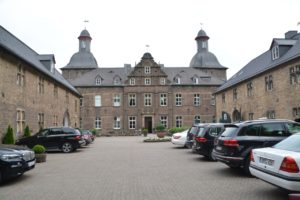


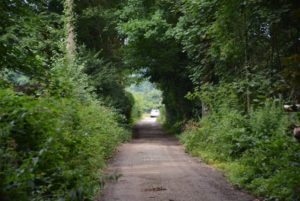


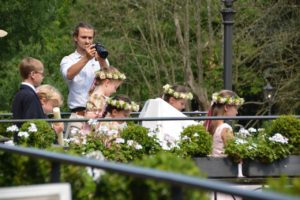
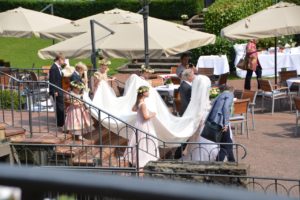



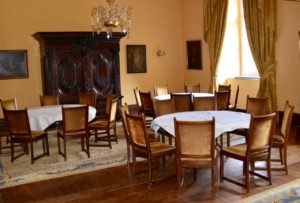
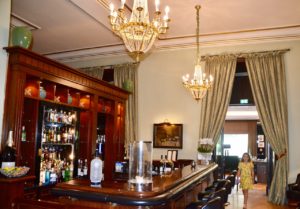








































































































 .
. 













































































































































































































































































































































































